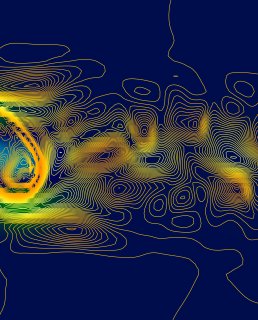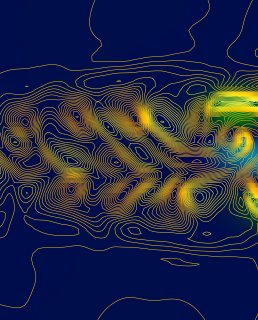
Editor’s Choice 2023-24
Some images and areas of study manage to represent a diverse cross-section of disciplines: computer science, mathematics, physics, biology and myriad others. Cellular automata, popularized by Conway’s Game of Life in the 1970s, is one such example.
Shown here is a snapshot of a version classified as a continuous cellular automaton, where a cell’s state can be represented not just by a discrete value (usually an integer), but by any rational number (in this case between 0 and 1). Each pixel in the image represents a single cell, and the color represents the cell’s current state. Every round, each cell undergoes a calculation in which it perceives the states of its eight immediate neighbors and chooses a new value for itself based on parameters defined by the programmer. When tuned correctly, these constant changes showcase a beautiful animation emblematic of the phenomena of emergence in mathematics and science.
Many of these automata display life-like characteristics and can grow incredibly complex. The program used to create this automaton was written by graduate student Marco Ravelo and can be accessed in the link below.
Credit:
Marco Ravelo
Computer Science Ph.D. Student




